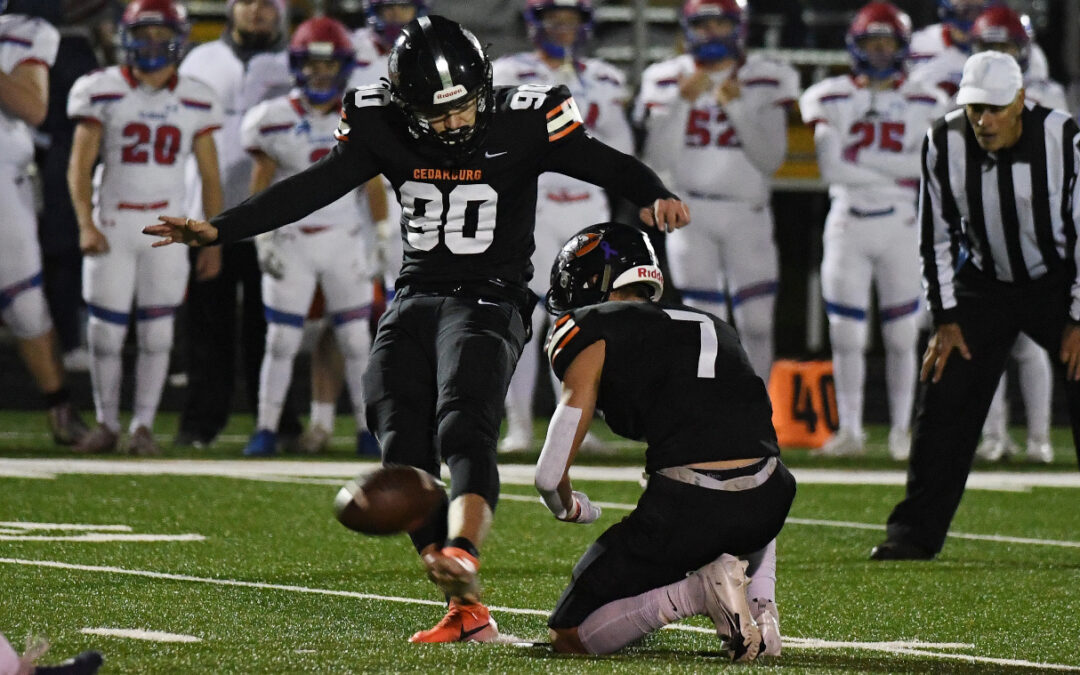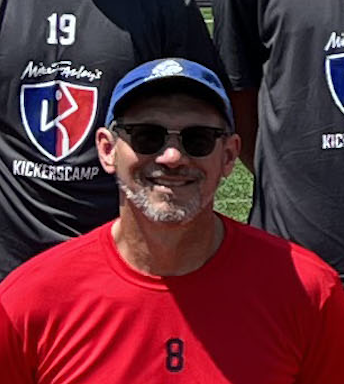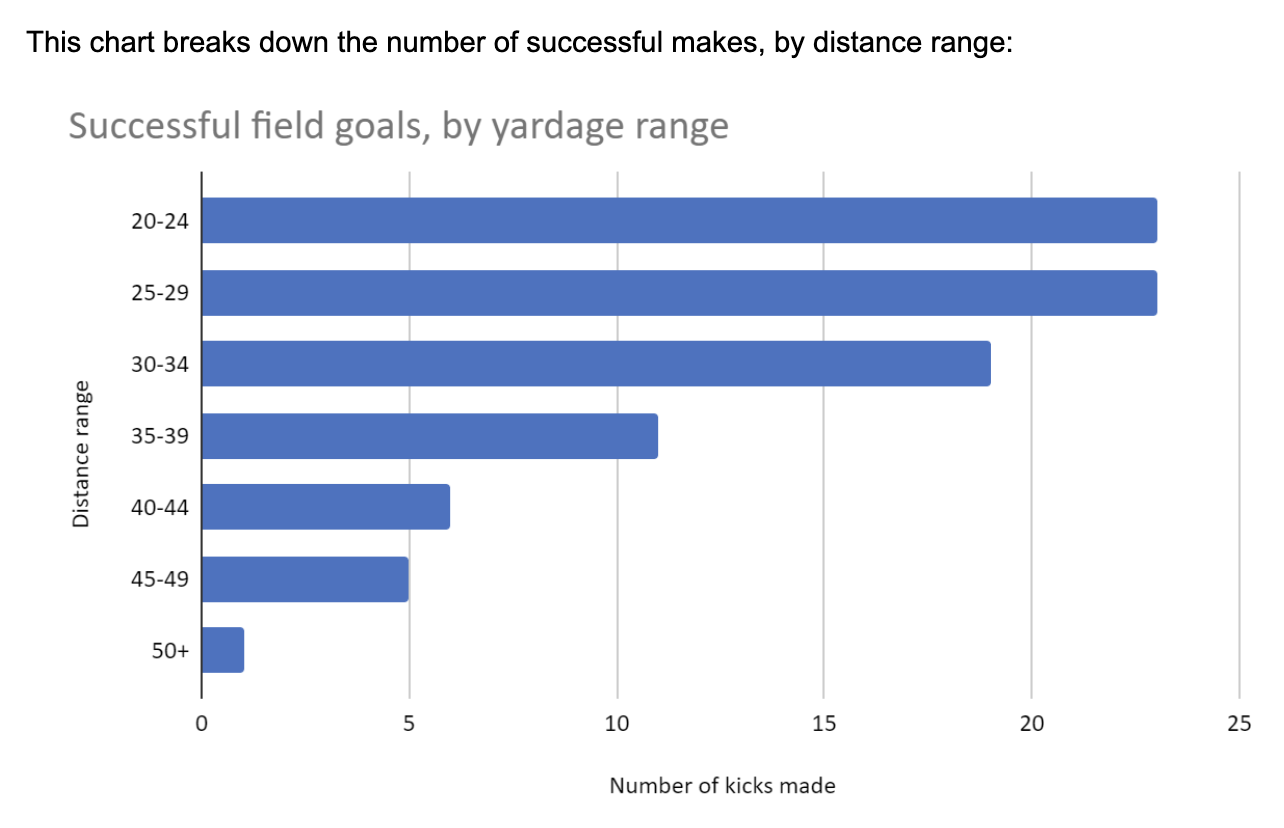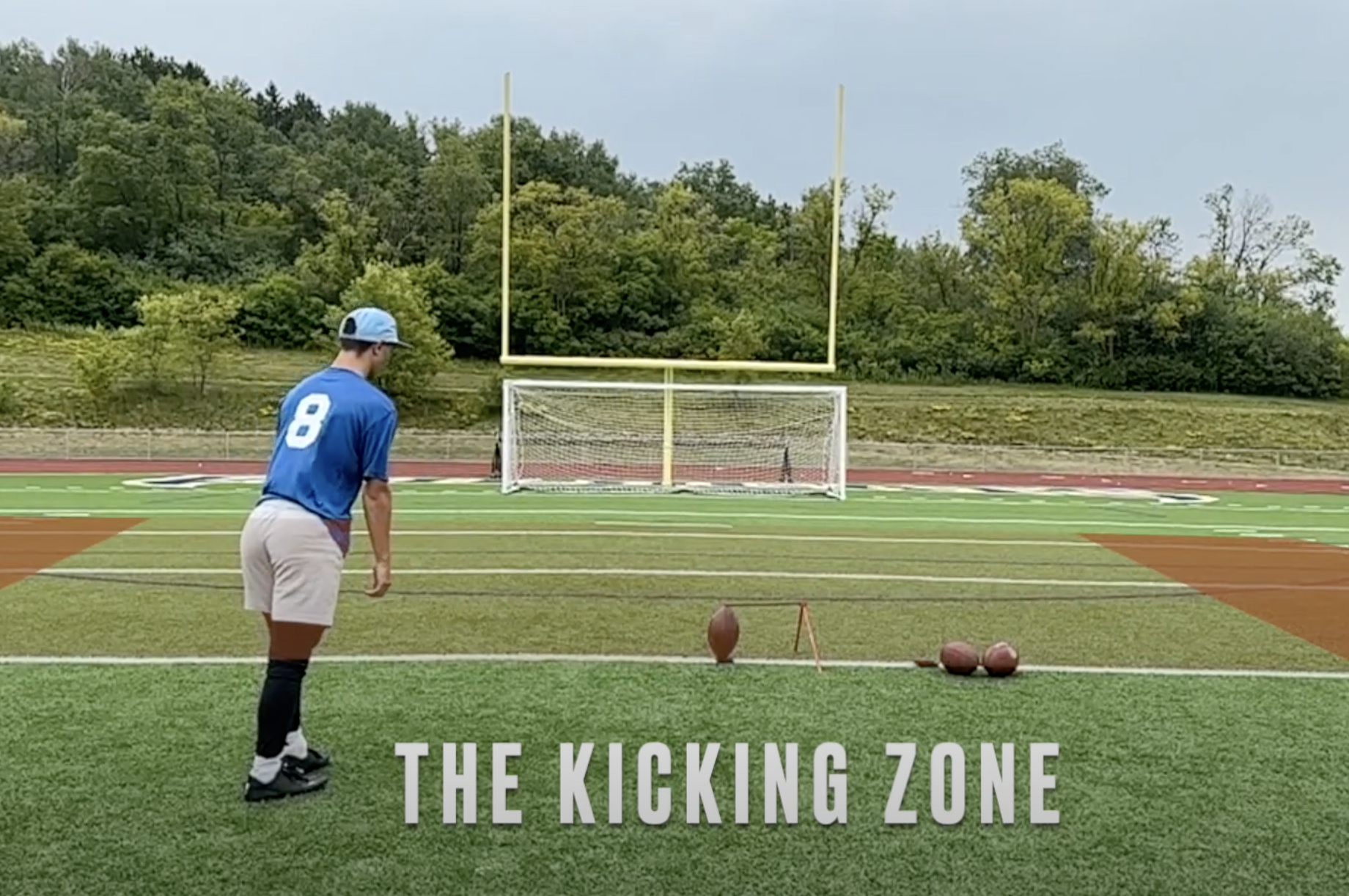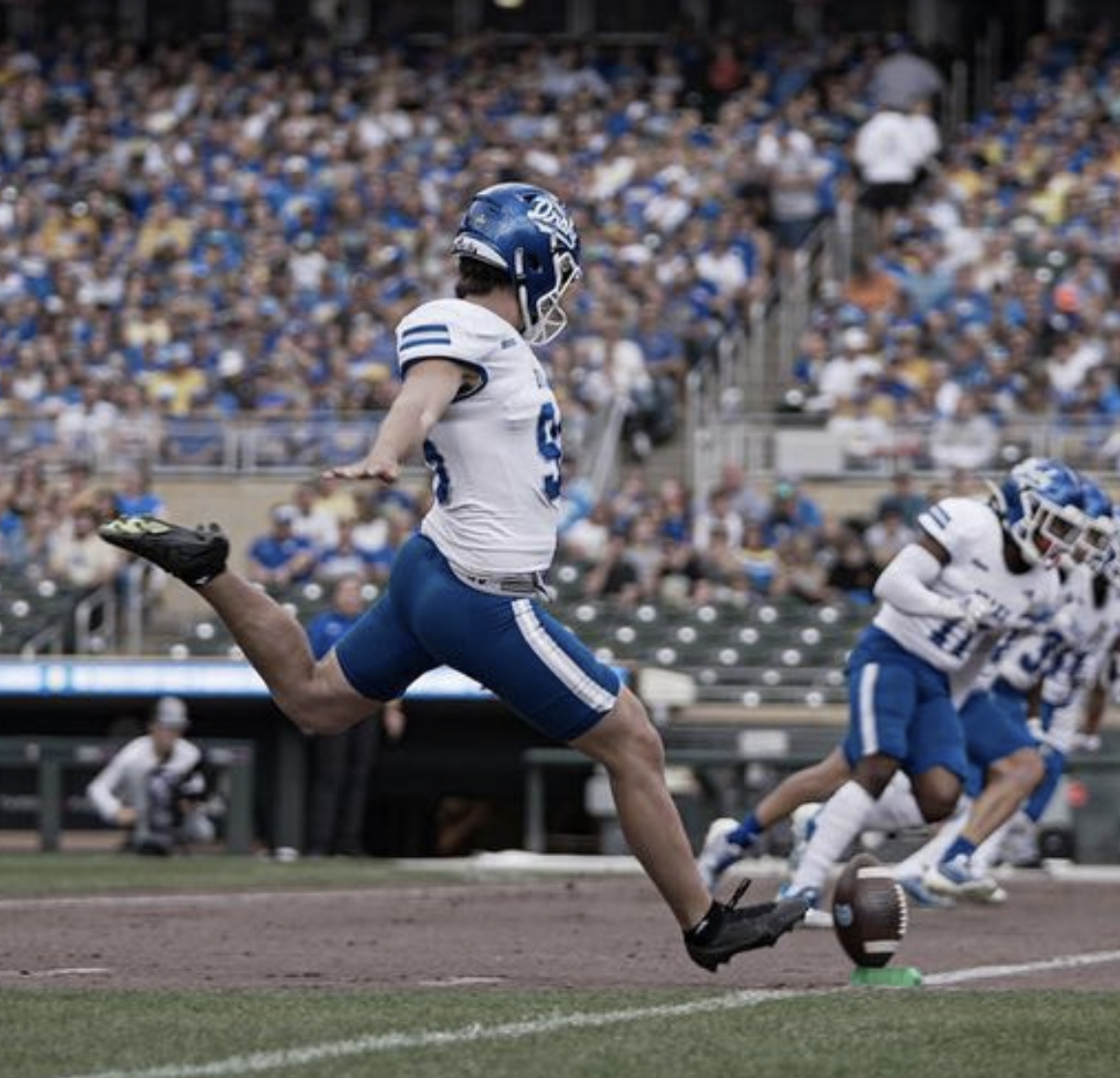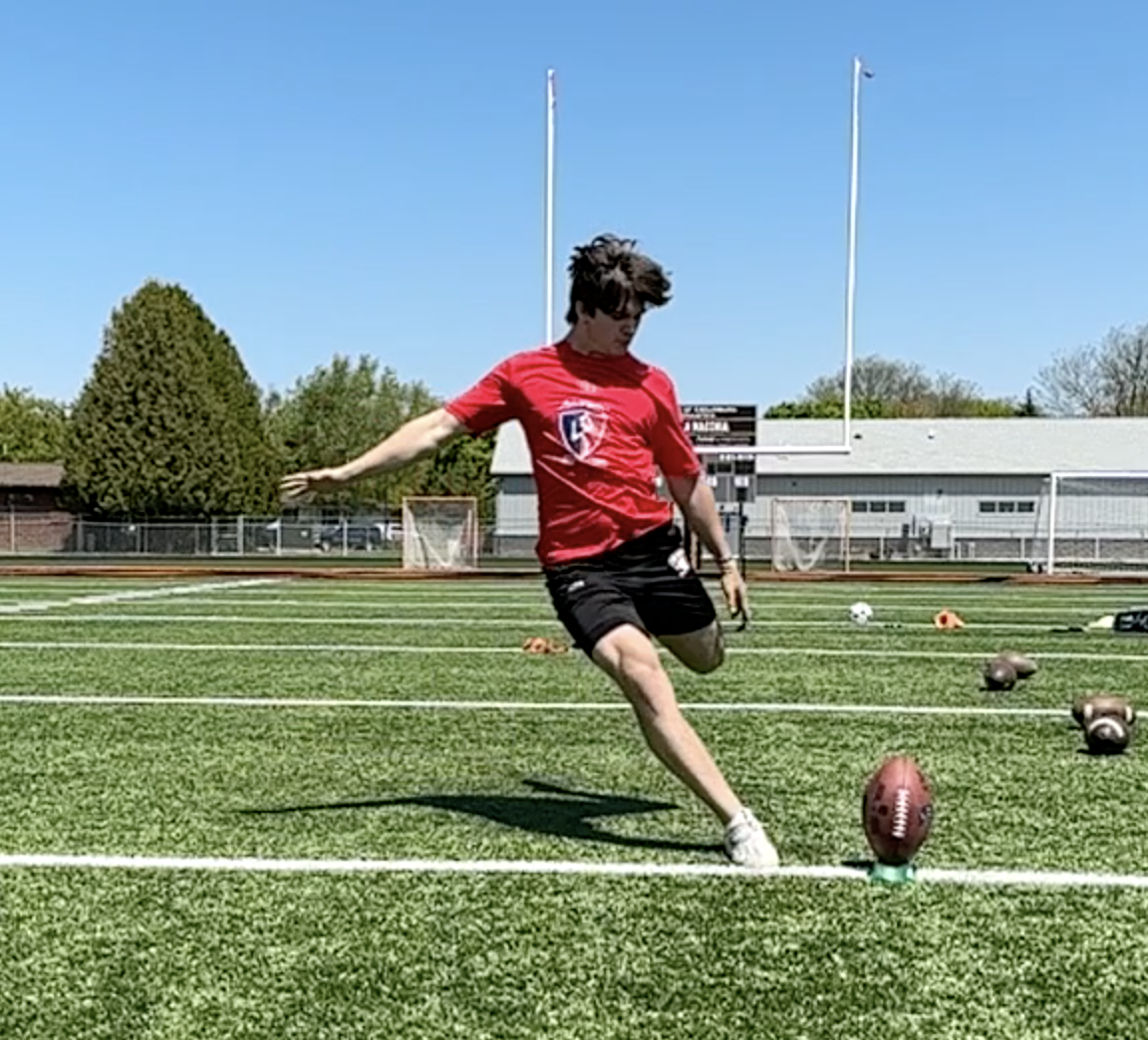GUEST BLOGGER:
Matt Schroeder attended the 1983 version of the original Mike Farley’s Kickers’ Camp in River Falls, Wisconsin. He kicked in the Indiana North-South All-Star game in 1986 and briefly at Indiana State University.
Professionally, Matt has an extensive journalism background and works in content marketing for a Fortune 500 company.
He listened to Coach Farley’s talk on the K-Zone, and actually put it to the test. This is what he found out…
Does K-Zone thinking stand up to scrutiny?
It does not take much searching through Instagram or TikTok to find video clips of a kicker, alone on his game field, shod in a sleeveless T-shirt and shorts, booting a 55- or 60-yard field goal through the uprights from the center of the field.
Even during a summer workout, unrushed and unchallenged, it’s an impressive feat.
But how much relationship does that really have to being the most effective Friday Night Kicker you can be? Do field goals of that distance happen very often in high school? According to a healthy data sample from the 2023 high school season in Wisconsin, the answer is … no.
We took a look at four conferences, as built in 2023 prior to an off-season realignment:
- Badger-Large
- Wisconsin Valley
- Parkland
- Rock Valley
These leagues represent different areas of the state; the schools’ enrollment skews larger than the state as a whole but many smaller schools do not have their data reliably recorded on WisSports, which is our source for this examination.
Our data set includes every game these teams played, including non-conference and playoffs. The box scores were scoured for every field goal distance recorded in the game summaries. These self-reported box scores are not perfect – there is still a risk that field goal distances are incorrectly entered, the number of attempts is not available and some games with a field goal didn’t have the distance entered at all – but with a large enough sample you can still draw some conclusions.
From these four leagues we identified 88 successful field goal attempts in 2023. How many were 60-yarders? Zero, of course. There have been only four 60-yard field goals in Wisconsin high school history, according to the state coaches’ association record book, and two of those were free kicks after a fair catch. Instead, the data shows that most kicks were from far closer.
As you can see, 46 of the 88 kicks (52.2%) were from 29 yards or less. Only 12 were 40 yards or beyond, with a single 51-yarder made by a kicker from Superior High School in a non-conference game. Ironically, it was made in the first quarter of the first game of the season for a team that finished 0-9.
The average distance of these 88 kicks was 30.5 yards, the equivalent of the offense stalling out at the opposing 13-yard line. A full 37 kicks were 27 yards or shorter, meaning advancement to the 10-yard line.
Coach Farley talks about the K-Zone, that area from the 15-yard-line down to about the 3-yard line, where he encourages coaches to really consider kicking the field goal on fourth down to help ensure you get points. Our review of the data suggests that most successful field goals in high school occur in that zone.
What does this mean for you, as a Friday Night Kicker who wants to help his or her team win conference titles and playoff games? It’s a challenge to push just beyond that K-Zone and be consistent from 35 to 40 yards. That could give you an advantage over many of the teams you face during the season, and when your coach knows your team is better than the opponent in any facet of the game, it’s something he’ll likely want to exploit.
To get there is not complicated, but it does take work. You’ll need:
- Consistent routines, which leads to consistent technique
- Excellent foot-to-ball contact
- Practice time with your holder and snapper
This last one is critical. In almost all cases the holder and snapper (and possibly the kicker) are playing other positions. Unfortunately, honing the field goal operation is an afterthought for many high school coaches in their limited practice time during the season.
If you can get that unit out together during the summer, quality practice is better than quantity. Scatter a few footballs outside the K-Zone, between the 18- and 23-yard lines. Put them across the field, from hashmark to hashmark and everywhere in between. Go through a full routine for every kick, including the jog on from the sideline to help replicate a game situation. Ten or 12 kicks in this manner a few times a summer will do wonders.
And then, when the conditions are right, if you want to push that distance envelope, go for it! It’s fun to try and bomb away from time to time. If you find you do have the leg from near midfield, maybe you can grow into a Saturday Afternoon Kicker, too. But that will come only when you can show consistent success from the spots where a coach will trust you to make it.
K-ZONE: typically, from the 3 yard line to the 15 yard line is where high school kickers need to become confident because it’s where most all of their kicks will come from. “To truly help your team, stop worrying about “bombs” and get good in the K-Zone.” — Coach Farley
BECOME A BETTER KICKER & WIN MORE GAMES BY UNDERSTANDING THE K-ZONE
To learn more about the Kicking Zone and how it is best implemented for high achool coaches and kickers, please click through to this 12 minute video presentation from Coach Farley > WATCH THE FULL K-ZONE VIDEO
Matt Schroeder is also the father of Drake kicker/punter, Ryan Schroeder, who’s also been a counselor at Mike Farley’s Kickers Camp, as well as a “star” of some MFKC training YouTube videos.
BTW, that’s Ryan in the blog cover shot kicking for Cedarburg High School… kicking slightly outside of the K-Zone. 🙂

